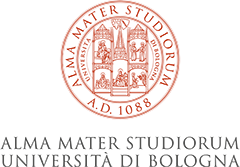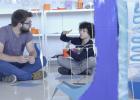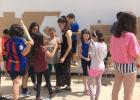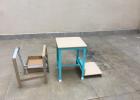Identification Plan
1. Promote children’s creativity by getting them in contact with young creators and their artistic projects.
2. Facilitate the relationship between education and culture.
3. Establish spaces for reflection through art.
4. Improve the methodologies, organizations and equipment of educational centers to improve the inclusion of centers and academic success.
Pedagogical Plan
Intellectual/Cognitive Aspects
Children: ability to express themselves without being judged; learning of new artistic references; sharing of the creative processes with the peers; getting to know a different way of working from the side of the artist by providing a diverse vision of the world.
School: get to know and understand other learning spaces outside the classroom; the school changes and adapts to a new reality, becomes more creative and inclusive, respects the individual rhythms of children.
Socio-relational Aspects
The artist invites the children to start an experience without receiving any judgment or evaluation.
The artist has shared the works made in exhibitions in educational centers (La Llotja) and in cultural centers (Fabrica Fabra i Coats and civic centers)
Aesthetic/emotional/linguistic Aspects
The artists provide visual references that are not worked on in the classroom.
Conversations about the analysis of the artist and students’ creative processes
One year the project was developed in a school with three performing artists in residence, in collaboration with the Institut del Teatre (Barcelona).
Students share their processes with the resident artist and with their peers too.
Methodological plan
The learning process of the students, artists and school develops throughout the course and adapts to new circumstances and suggestions. The focus is supposed to be on the learning processes of these participants. This process occurs through the art, where the scenarios are transformed and the interaction of knowledge is fundamental.
Visual narrative is important for different areas:
- Annual documentation made by artists and mediators and including the documents made with children.
- Articles
- Blog, social networks (instagram and websites of the participant schools)
-The process instead of the result
-childhood empowerment
-Creative learning in creative environments
-Bidirectional learning relationships between artists and the children
-Impact and change in the pedagogical strategies of the educational center
-Involvement of cultural institutions in the educational field and vice versa
Stages of the Project
Initial phase
The resident artist sets up their works in the creation space. Children are invited for a few hours a week so that they can watch the creation processes and think about what projects they would like to start accompanied by the artist. The artist and the students decide together what materials, techniques, and tools are needed to start developing the artistic projects.
During the school year. Espai C is available for primary school children for 4 hours a week. The artist can use Espai C any day of the week at any time.
The workshop is a space shared by the artist and children. In its initial phase, the assembly is created to decide about the management of the needs and its organization. The artist does not hold classes or workshops at school but uses the space assigned as a workshop for a year. The artist is always there and shares the space with the students, who develop their projects. The artist and the children work together and share strategies and knowledge mutually. The participation of the students in this workshop is always voluntary and linked to a personal or group project. Working in space C must not compromise the development of other school tasks. Teachers can ask the artist or the group for advice, in order to develop the projects of the group.
Intermediate phase
The boys and girls develop the project they have chosen and begin to carry it out. They use the materials that they find in the workshop and learn to use the proper vocabulary of the tools and the languages of artists.
During the school year, Espai C is available for primary school children for 4 hours a week. The artist can use Espai C any day of the week at any time.
In this phase, the children talk with the artist, share concerns, opinions, questions about how to sort out the doubts that arise during the activities. On the other hand, the artist shares their creative process with them, their way of working and references that are helping them throughout their work.
Final phase
Carry out the works without the goal of finalising it but with the aim of going through the experimentations in their creative processes.
During the school year, Espai C is available for primary school children for 4 hours a week. The artist can use Espai C any day of the week at any time.
The creative processes carried out in Espacio C both by the resident or collective artist and the participating students must be visible in the educational center itself and also in the artistic and cultural area of Barcelona. Some of these processes have been shown in those educational and/or cultural institutions of the city linked to the project.
-It provides autonomy and spaces for the students’ reflection, improves entrepreneurship and encourages the personal contribution in the autonomous learning.
-Promotion of creativity, divergent and critical thinking, imagination as aptitudes to grow up as individuals.
Painting, drawing, illustration, engraving, jewellery, sculpture, stop-motion, textile art, photocollage, etc.
Pencils, tempera, markers, watercolour, cardboard, iron, wood, photographs, computers, plasticine, clay, pigments, artist catalogues, brass, fabrics, threads, etc.





















